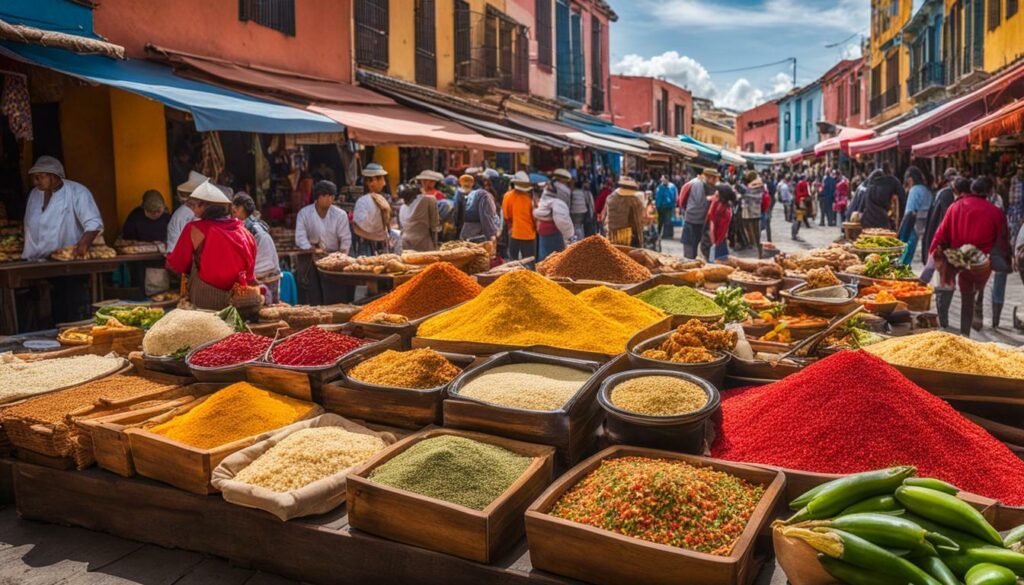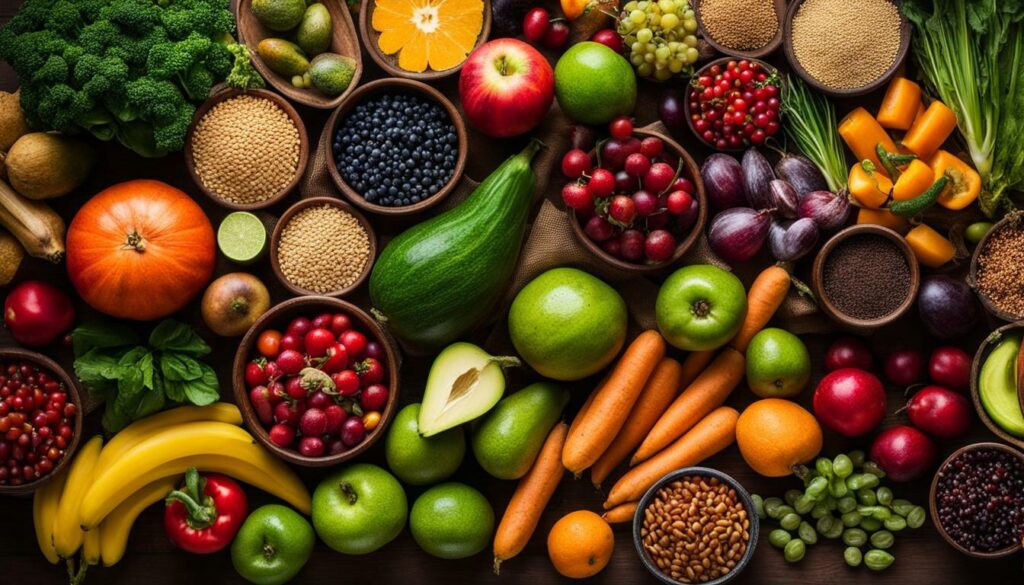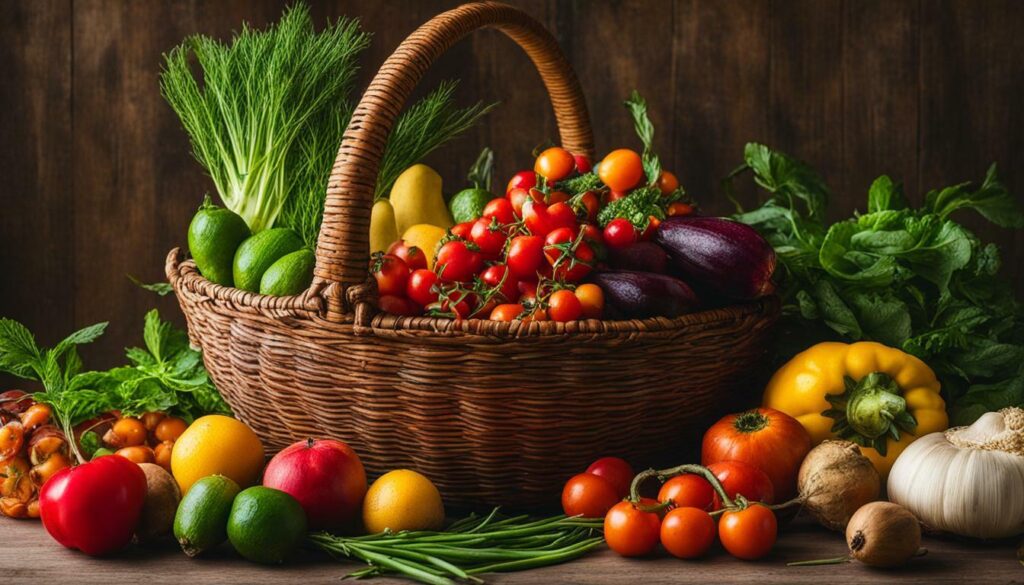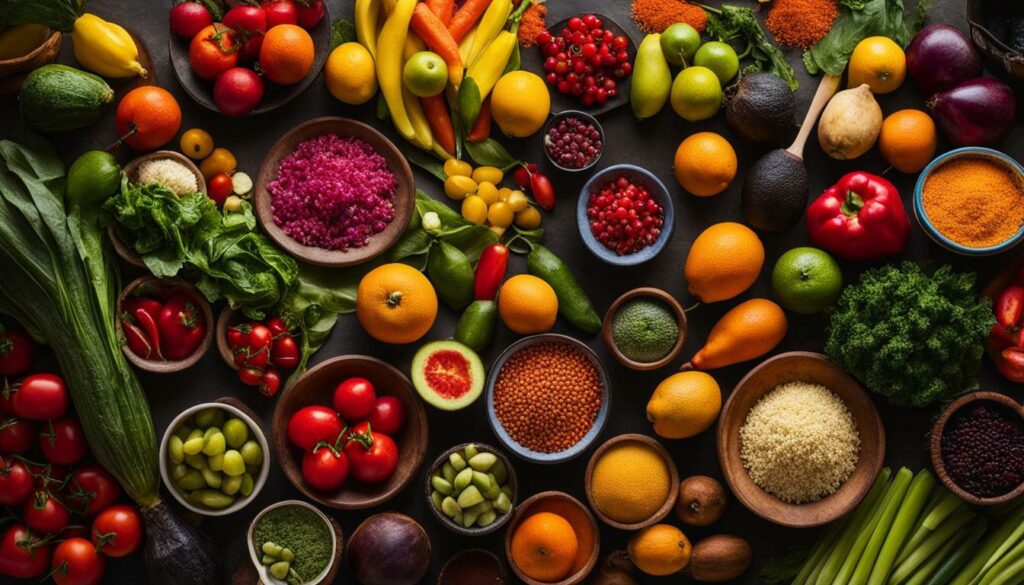South America has a fascinating history of food, with diets evolving and adapting over time to create a diverse and vibrant culinary landscape. From the ancient civilizations of the Incas and Mayans to the modern-day fusion cuisines, South American food culture is a melting pot of flavours, traditions, and influences. Throughout history, the region’s diets have been shaped by indigenous traditions, European colonization, and African heritage, resulting in a rich tapestry of culinary delights. To truly understand South American cuisine, it is essential to explore its past and present diets, uncovering the historical context and the cultural influences that have shaped this unique food culture.
Key Takeaways
- The diets of South America have evolved and adapted over time, creating a diverse and vibrant culinary landscape.
- Historical diets in South America have been influenced by indigenous traditions, European colonization, and African heritage.
- Ancient civilizations in South America relied on staples such as corn, yucca, beans, avocados, and potatoes.
- The Columbian Exchange brought new foods to the Americas, such as potatoes and tomatoes, while introducing European crops to the region.
- Modern South American cuisine showcases the fusion of traditional flavours with contemporary culinary trends.
Traditional Foods in South America
Traditional foods form the heart of South American cuisine, with each country boasting its own unique culinary traditions and flavours. The rich history and diverse cultural influences have shaped the region’s food culture, resulting in a tantalizing array of dishes that showcase the bountiful ingredients found in this corner of the world.
From the vibrant spices of Peru’s ceviche to the hearty feijoada of Brazil, South American cuisine history is a tapestry of flavours. The culinary traditions of South America have been shaped by indigenous cultures, European colonization, and African heritage, creating a melting pot of gastronomic delights.
One cannot discuss South American traditional foods without mentioning staples such as corn, yucca, beans, pineapples, avocados, tomatoes, and potatoes. These ingredients have long been a part of the region’s diet, consumed in various forms and showcasing the versatility of South American cuisine.

The culinary traditions of South America reflect the diverse landscapes and climates of the continent. From the coastal regions with their abundance of fresh seafood to the Andean highlands where quinoa and potatoes reign supreme, each region has its own unique culinary identity.
Traditional cooking methods, such as the use of open fires and clay pots, further enhance the flavours of South American dishes. The result is a rich and vibrant cuisine that captivates the taste buds and tells the story of the region’s history and cultural heritage.
| Country | Traditional Dish |
|---|---|
| Argentina | Asado (Barbecued Meat) |
| Peru | Ceviche (Raw Fish Marinated in Citrus Juices) |
| Brazil | Feijoada (Black Bean Stew with Pork) |
| Colombia | Ajiaco (Chicken and Potato Soup) |
| Chile | Empanadas (Savory Pastries) |
These traditional dishes are just a small taste of the culinary traditions that have been passed down through generations in South America. They represent the history, culture, and flavours that make South American cuisine truly unique.
Ancient Diets of South America
Ancient diets in South America were diverse and varied, with indigenous civilizations relying on staple foods that sustained their communities for centuries. These civilizations developed sophisticated agricultural techniques and cultivated a wide range of crops, contributing to the rich culinary traditions of the region.
The Paleoindians in the Brazilian Amazon, for example, relied on a combination of hunting, fishing, and gathering for their sustenance. They consumed a variety of foods, including fish, turtles, manioc, fruits, nuts, and palm hearts. The Mesoamericans, such as the Aztecs and Mayans, cultivated maize as their primary crop, which formed the basis of their diet. They also grew beans, tomatoes, avocados, and chilli peppers, incorporating these ingredients into their meals.

These ancient civilizations had a deep understanding of the nutritional value of their staple foods. For instance, maize was combined with beans to form a complete protein source. The consumption of amaranth, quinoa, and other pseudo-grains provided essential nutrients and contributed to their overall health.
By exploring the ancient diets of South America, we gain insights into the rich culinary heritage that has shaped the region’s cuisine over time. It is a testament to the cultural significance of food in South America and its impact on the social and economic structure of the region.
The Impact of the Columbian Exchange
The Columbian Exchange brought a revolution in South American food culture, with the exchange of crops and culinary traditions between the Old and New Worlds. This period of exploration and colonization significantly influenced the diets of both continents, resulting in the introduction of new foods and the cultivation of crops that would become staples in South American cuisine.

European explorers, such as Christopher Columbus and his crew, encountered a variety of indigenous foods that were completely unknown in Europe. These new foods, including potatoes, tomatoes, corn, and chocolate, were brought back to Europe and quickly integrated into European diets. Similarly, European settlers introduced foods like wheat, rice, and sugar cane to South America, forever changing the culinary landscape of the continent.
The Columbian Exchange also resulted in the migration of culinary traditions. European colonizers brought their own cooking techniques and recipes, which merged with indigenous methods and ingredients to create a unique fusion of flavours. This cultural exchange gave birth to popular South American dishes like ceviche, empanadas, and feijoada.
| European Foods Introduced to South America | South American Foods Introduced to Europe |
|---|---|
| Potatoes | Maize (corn) |
| Tomatoes | Pineapples |
| Wheat | Avocados |
| Sugar cane | Beans |
The impact of the Columbian Exchange on South American food culture cannot be overstated. It not only introduced a variety of new foods and ingredients but also shaped the culinary traditions and cultural heritage of the continent. Today, South American cuisine is a vibrant reflection of its rich history and diverse influences.
Indigenous Diets and Health
Indigenous populations in South America have long relied on plant-based diets, which have been shown to have positive effects on cardiovascular health. Studies conducted among indigenous communities in Brazil and Peru demonstrate the protective benefits of these dietary habits against cardiovascular risk factors.
Traditional South American diets mainly consist of a variety of fruits, vegetables, nuts, and grains, which are rich in essential nutrients and antioxidants. These natural foods have been integral to the indigenous cultures of South America for centuries, providing sustenance and promoting overall well-being.
For instance, the consumption of staples like corn, beans, and quinoa offers high levels of fibre, plant-based protein, and complex carbohydrates. These nutrients contribute to lower cholesterol levels, improved blood sugar control, and reduced risks of heart disease. Additionally, the incorporation of fruits such as avocados, tomatoes, and berries in their diets further enhances cardiovascular health due to their abundant antioxidants and anti-inflammatory properties.
Furthermore, the inclusion of traditional cooking techniques, such as steaming and boiling, helps preserve the nutritional content of these plant-based foods. This ensures that South American indigenous communities maintain a diet that promotes heart health and overall longevity.
| Nutrient-Rich Plant Foods in Indigenous South American Diets |
|---|
| Corn |
| Beans |
| Quinoa |
| Avocados |
| Tomatoes |
| Berries |

The plant-based diets of indigenous South Americans not only contribute to enhanced cardiovascular health but also offer a sustainable approach to nourishing the body. By emphasizing the consumption of locally sourced and nutrient-dense foods, these dietary practices promote a healthy lifestyle while respecting the environment.
Modern South American Cuisine
South American cuisine has evolved over time, blending traditional flavours with modern techniques to create a dynamic and exciting culinary scene. From the vibrant street food stalls of Brazil to the sophisticated fine dining restaurants of Peru, South America offers a diverse range of culinary experiences that celebrate the region’s rich cultural heritage.
One of the most popular aspects of modern South American cuisine is its emphasis on fresh, local ingredients. Chefs draw inspiration from traditional recipes and indigenous cooking methods, using locally sourced produce to create dishes that showcase the unique flavours of the region. From succulent grilled meats and seafood to vibrant vegetarian and vegan options, South American cuisine offers something for everyone.
One standout feature of South American cuisine is its fusion of flavours and influences. European, African, and indigenous culinary traditions have all made their mark on the region’s food culture. For example, in countries like Argentina and Uruguay, you can find traditional asado, a style of barbecuing influenced by European immigrants, alongside indigenous ingredients like quinoa and corn.
Whether it’s the classic ceviche of Peru, the hearty feijoada of Brazil, or the tantalizing empanadas of Argentina, South American cuisine continues to captivate food lovers around the world. With its bold flavours, diverse ingredients, and innovative cooking techniques, it’s no wonder that South American dishes are gaining global recognition and inspiring a new generation of chefs and food enthusiasts.

| Popular South American Dishes | Country of Origin |
|---|---|
| Ceviche | Peru |
| Feijoada | Brazil |
| Empanadas | Argentina |
| Arepa | Venezuela |
| Lomo Saltado | Peru |
| Churrasco | Brazil |
| Asado | Argentina |
| Pisco Sour | Peru |
Culinary Influences on South American Diets
South American diets have been shaped by a rich tapestry of cultural influences, resulting in a diverse and eclectic culinary tradition. Throughout history, the region has been home to various indigenous civilizations, European colonizers, and African slaves, all of whom have contributed to the vibrant food culture we see today.
The indigenous peoples of South America had a profound impact on the region’s diets. They cultivated crops such as corn, yucca, beans, pineapples, avocados, tomatoes, and potatoes, which are now staples in many South American dishes. The Amazon rainforest alone is home to thousands of edible plants that have been used for centuries by indigenous communities.
The arrival of European colonizers during the Age of Exploration brought new ingredients and cooking techniques to the continent, forever altering South American cuisine. European settlers introduced foods like wheat, rice, sugar, and livestock, transforming the way people ate and cooked. The fusion of European and indigenous ingredients gave rise to unique dishes like feijoada in Brazil and ceviche in Peru.
The African influence on South American diets is also significant. Due to the transatlantic slave trade, millions of Africans were brought to the continent, bringing with them their culinary traditions. African ingredients and cooking techniques, such as okra, palm oil, and the use of spices, have been incorporated into South American dishes, particularly in countries like Brazil and Colombia.

South American culinary traditions are a testament to the region’s rich history and cultural diversity. The blending of indigenous, European, and African influences has created a unique and vibrant food culture that continues to evolve. From the hearty stews of the Andes to the aromatic flavours of the Amazon, South American cuisine offers a sensory experience that reflects the rich tapestry of its cultural heritage.
| Culinary Influences | Countries |
|---|---|
| Indigenous | Peru, Bolivia, Ecuador |
| European | Brazil, Argentina, Chile |
| African | Colombia, Venezuela, Uruguay |
South American diets represent a harmonious blend of flavors, techniques, and ingredients from the different cultures that have inhabited the region. From the ancient civilizations that first cultivated native crops to the subsequent influences of European colonization and African slavery, South American food culture is a true reflection of its diverse history.
As South America continues to evolve and embrace modernity, its culinary traditions remain an integral part of its identity. From street food vendors serving up empanadas and arepas to high-end restaurants pushing the boundaries of gastronomy, South American cuisine is celebrated for its bold flavours and vibrant colours. Whether you’re indulging in a traditional Brazilian barbecue or savouring the delicate flavours of Peruvian ceviche, you’re experiencing the rich heritage of South American culinary traditions.
South American Superfoods
South America is home to a myriad of superfoods, packed with essential nutrients and hailed for their health benefits. These nutrient-rich foods have gained popularity worldwide for their unique flavours and potential impact on overall well-being.
Quinoa

Quinoa a versatile grain-like seed, has been a staple food in the Andean region for thousands of years. It is a complete protein, containing all nine essential amino acids, and is also rich in fibre, antioxidants, and minerals. Quinoa is known for its nutty flavour and can be incorporated into various dishes, such as salads, soups, and even desserts.
Chia Seeds
Chia seeds have been consumed in South America for centuries and are prized for their high nutrient content. These tiny seeds are packed with omega-3 fatty acids, fibre, protein, and antioxidants. They can be added to smoothies, yogurt, or used as an egg substitute in baking due to their ability to absorb liquid and form a gel-like consistency.
Açai Berries
Açai berries are indigenous to the Amazon rainforest and have gained popularity as a superfood due to their antioxidant properties. These small, dark purple berries are rich in anthocyanins, which may help reduce inflammation and promote heart health. Açai berries are often enjoyed in bowls, smoothies, or as a topping for granola or yoghurt.
These are just a few examples of the superfoods South America has to offer. Including these nutrient-dense foods in your diet can be a delicious way to boost your overall health and well-being.
| Superfood | Nutrient Highlights |
|---|---|
| Quinoa | Omega-3 fatty acids, fibre, protein, antioxidants |
| Chia Seeds | Omega-3 fatty acids, fiber, protein, antioxidants |
| Açai Berries | Anthocyanins, antioxidants, heart-healthy properties |
Conclusion
The past and present diets of South America reflect a rich history of cultural exchange and culinary traditions, with food playing a central role in the region’s identity and heritage. Throughout history, South America has been influenced by a variety of factors, including indigenous traditions, European colonization, and African heritage, all of which have contributed to the diverse and vibrant food culture found in the region today.
Exploring the traditional foods and ancient diets of South America reveals the ingenuity and resourcefulness of indigenous civilizations. Staple foods such as corn, yucca, beans, avocados, and tomatoes were cultivated and consumed by ancient Americans, showcasing their deep knowledge of agriculture and sustainable food practices.
Furthermore, studies have shown the protective effects of plant-based diets on cardiovascular risk factors, with indigenous populations in Brazil and Peru serving as examples of the health benefits of a primarily plant-based diet. This highlights the importance of incorporating traditional foods and dietary habits into modern South American cuisine.
The Columbian Exchange had a profound impact on South American food culture, introducing new foods from the Old World and forever changing the culinary landscape of the Americas. Foods such as potatoes, tomatoes, sugar, coffee, and bananas made their way to Europe, while crops like corn, quinoa, and açai berries gained popularity worldwide for their nutritional value.
In conclusion, the past and present diets of South America showcase a fusion of culinary traditions and cultural influences that have shaped the region’s food culture. From ancient civilizations to modern times, food has not only nourished the body but also served as a symbol of South American identity and a testament to the region’s historical and ongoing cultural exchange.
FAQ
What is the focus of this article?
This article explores the past and present diets of South America, discussing the contributions of native peoples and scientists, the food habits of ancient civilizations, the impact of the Columbian Exchange, and the cultural influences on South American diets.
What are some traditional foods in South America?
Traditional South American foods include corn, yucca, beans, pineapples, avocados, tomatoes, potatoes, sugar, coffee, soybeans, oranges, and bananas.
What did indigenous civilizations in South America eat?
Indigenous civilizations in South America consumed a variety of foods, including corn, yucca, beans, pineapples, avocados, tomatoes, and potatoes.
How did the Columbian Exchange impact South American food culture?
The Columbian Exchange introduced new foods to South America and Europe, such as potatoes and tomatoes. It also led to the cultivation of crops like sugar, coffee, soybeans, oranges, and bananas in the Americas.
What is the relationship between indigenous diets and health?
Studies have shown that plant-based diets, which are often consumed by indigenous populations in South America, have protective effects on cardiovascular risk factors.
How has South American cuisine evolved in modern times?
South American cuisine has evolved to incorporate a mix of traditional and modern influences, resulting in popular dishes and culinary trends.
What are the cultural influences on South American diets?
South American diets have been shaped by indigenous traditions, European colonization, and African heritage, resulting in a diverse culinary landscape.
What are some South American superfoods?
South American superfoods include quinoa, chia seeds, and açai berries, which are known for their nutritional benefits.
What is the conclusion of this article?
This article highlights the cultural significance of food in South America and the impact of the Columbian Exchange on the region’s social and economic structure.
Source Links
- https://www.gviusa.com/blog/getting-to-know-latin-american-food-culture/
- https://dcc.newberry.org/?p=14426
- https://www.ncbi.nlm.nih.gov/pmc/articles/PMC2972603/
Dive Deeper, Read Our Articles On The Subcontinents and Regions of South America
| Past and Present Diets of Andean Countries |
| Past and Present Diets of Amazon Basin Countries |
| Past and Present Diets of Southern Cone |
| Past and Present Diets of Guianas |



